Wentao Wei
From Unimodal to Multimodal: improving the sEMG-Based Pattern Recognition via deep generative models
Aug 08, 2023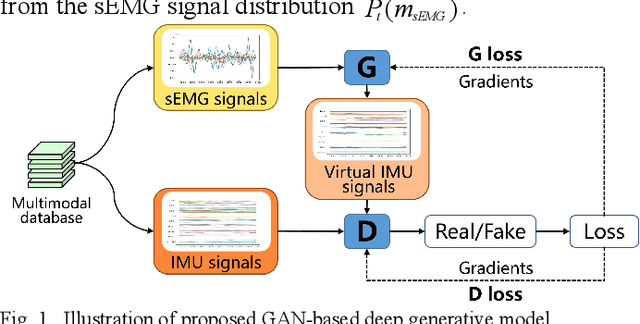
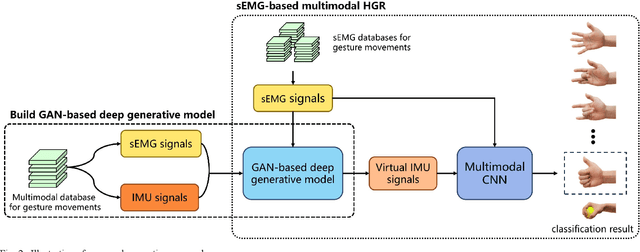
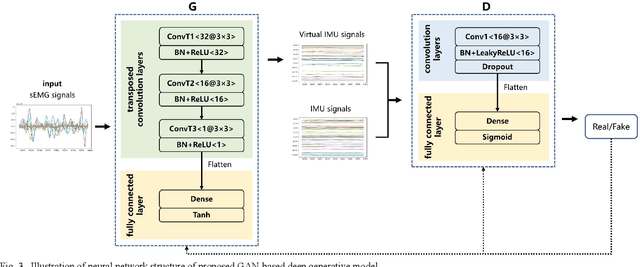
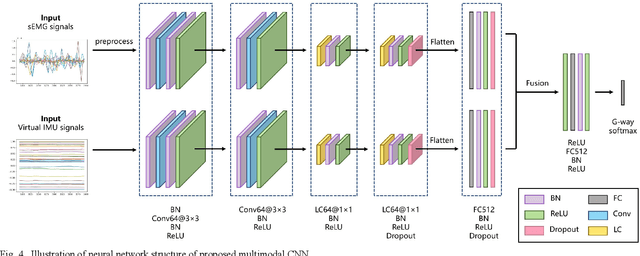
Abstract:Multimodal hand gesture recognition (HGR) systems can achieve higher recognition accuracy. However, acquiring multimodal gesture recognition data typically requires users to wear additional sensors, thereby increasing hardware costs. This paper proposes a novel generative approach to improve Surface Electromyography (sEMG)-based HGR accuracy via virtual Inertial Measurement Unit (IMU) signals. Specifically, we trained a deep generative model based on the intrinsic correlation between forearm sEMG signals and forearm IMU signals to generate virtual forearm IMU signals from the input forearm sEMG signals at first. Subsequently, the sEMG signals and virtual IMU signals were fed into a multimodal Convolutional Neural Network (CNN) model for gesture recognition. To evaluate the performance of the proposed approach, we conducted experiments on 6 databases, including 5 publicly available databases and our collected database comprising 28 subjects performing 38 gestures, containing both sEMG and IMU data. The results show that our proposed approach outperforms the sEMG-based unimodal HGR method (with increases of 2.15%-13.10%). It demonstrates that incorporating virtual IMU signals, generated by deep generative models, can significantly enhance the accuracy of sEMG-based HGR. The proposed approach represents a successful attempt to transition from unimodal HGR to multimodal HGR without additional sensor hardware.
Attention Paper: How Generative AI Reshapes Digital Shadow Industry?
May 26, 2023
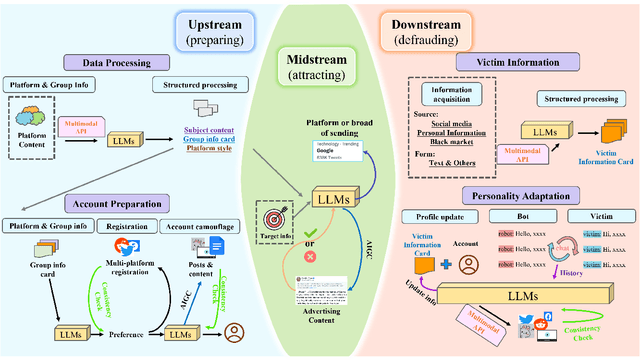

Abstract:The rapid development of digital economy has led to the emergence of various black and shadow internet industries, which pose potential risks that can be identified and managed through digital risk management (DRM) that uses different techniques such as machine learning and deep learning. The evolution of DRM architecture has been driven by changes in data forms. However, the development of AI-generated content (AIGC) technology, such as ChatGPT and Stable Diffusion, has given black and shadow industries powerful tools to personalize data and generate realistic images and conversations for fraudulent activities. This poses a challenge for DRM systems to control risks from the source of data generation and to respond quickly to the fast-changing risk environment. This paper aims to provide a technical analysis of the challenges and opportunities of AIGC from upstream, midstream, and downstream paths of black/shadow industries and suggest future directions for improving existing risk control systems. The paper will explore the new black and shadow techniques triggered by generative AI technology and provide insights for building the next-generation DRM system.
 Add to Chrome
Add to Chrome Add to Firefox
Add to Firefox Add to Edge
Add to Edge